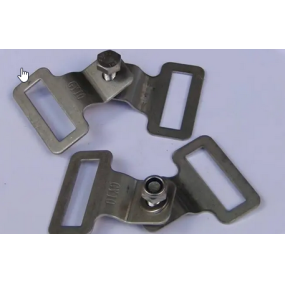In fierce market competition, integration of value-added functions of turning and milling composite machines is developing. The trend is represented by the use of a single machine tool for composite processing and processing in different ways, which stands out as the flagship of the production era that can achieve multi varieties, small batch production, and different output of different varieties. More than half of the original machining centers and CNC lathes will be replaced by turn milling composite machine tools, and it is expected to achieve a production and sales scale comparable to all machining centers.
The concept of changing turning and milling composite machine tools
The current manufacturing industry, especially in mechanical processing sites, has the following characteristics Multiple varieties and small batch production 9313; Shorten delivery time: <9314; Reduce costs: <9315; With the increase of lightweight and composite performance, complex shaped products have been added: <931616; Lack of skilled operators and excellent technical personnel. To adapt to this situation and win in the fierce market competition, CNC composite machines have made a brilliant debut.
A machine with multiple processes and different processing capabilities for processing complex shaped workpieces is called a composite machining machine tool. To achieve the same goal, there are also methods of using multi axis control coordinates, expanding machining functions, and multifunctionality. In breve, method of process integration is used to improve production efficiency and enhance the added value of machines tools. So, here we refer to the former's machine tools that achieve different types of processing in one machine and the latter's multi coordinate control machine tools as compound machining machines.
Functiones militiae et conversationis computationis temporibus mutatae sunt. In the past, there was a period when machining centers were referred to as composite machining machines, but due to limitations in the variety of tool exchange machining and the inability to enter the field of cutting machining, general machining centers are no longer referred to as composite machining machines. Similarly, the era when composite machining machines are no longer referred to as composite machining machines may not be far away.
The development and production of milling and turning composite machine tools are constantly advancing, especially in recent years, the sales of machine tools that combine turning and rotary cutting functions have rapidly increased, and it is expected to reach a production and sales scale comparable to machining centers in the future.
Initially, Japan's composite machining machines were based on lathes, with milling capabilities added and strengthened. Hoc est, quia quasi omnes opera particula, quae per latus processuntur, milling secundari et rotae machinae requirunt. The development of composite machining machines was originally aimed at synthesizing these machining processes.
However, this year's turning and milling composite machine tools have shifted from mainly turning to mainly milling, replacing the use of machining centers. Shenzhen EMAR Precision Technology Co., Ltd. has nearly 30 Japanese imported turning and milling composite machining machines and Korean imported composite machining machines, which can complete various processes such as turning, milling, drilling, tapping, and gong in one go. The company has significant processing advantages in the fields of medical equipment parts, drone parts, intelligent robot parts, optical parts, etc. Last year, the company successfully passed the IATF16949 certification and entered the automotive parts processing industry.


 English
English Spanish
Spanish Arabic
Arabic French
French Portuguese
Portuguese Belarusian
Belarusian Japanese
Japanese Russian
Russian Malay
Malay Icelandic
Icelandic Bulgarian
Bulgarian Azerbaijani
Azerbaijani Estonian
Estonian Irish
Irish Polish
Polish Persian
Persian Boolean
Boolean Danish
Danish German
German Filipino
Filipino Finnish
Finnish Korean
Korean Dutch
Dutch Galician
Galician Catalan
Catalan Czech
Czech Croatian
Croatian Latvian
Latvian Romanian
Romanian Maltese
Maltese Macedonian
Macedonian Norwegian
Norwegian Swedish
Swedish Serbian
Serbian Slovak
Slovak Slovenian
Slovenian Swahili
Swahili Thai
Thai Turkish
Turkish Welsh
Welsh Urdu
Urdu Ukrainian
Ukrainian Greek
Greek Hungarian
Hungarian Italian
Italian Yiddish
Yiddish Indonesian
Indonesian Vietnamese
Vietnamese Haitian Creole
Haitian Creole Spanish Basque
Spanish Basque







